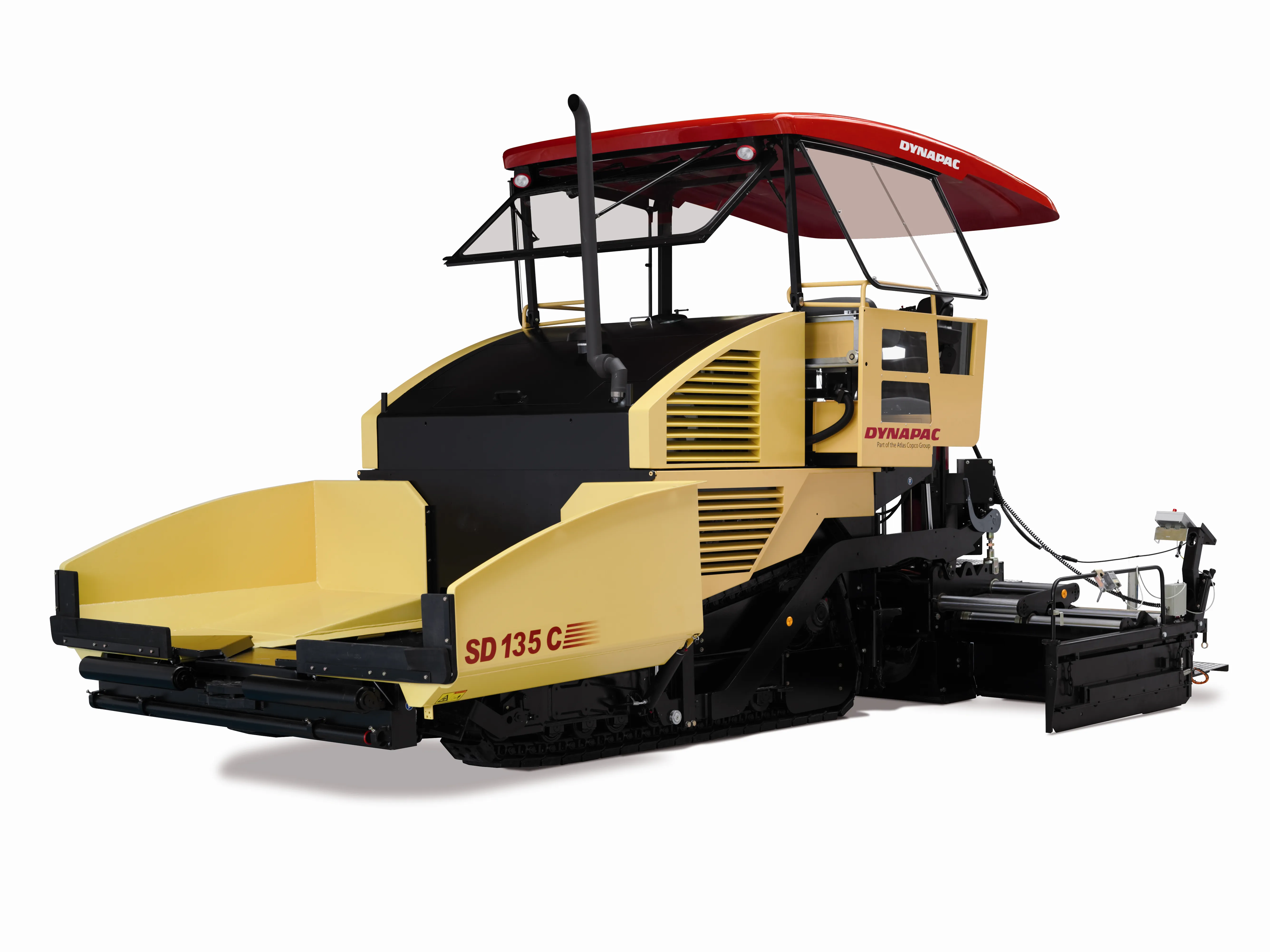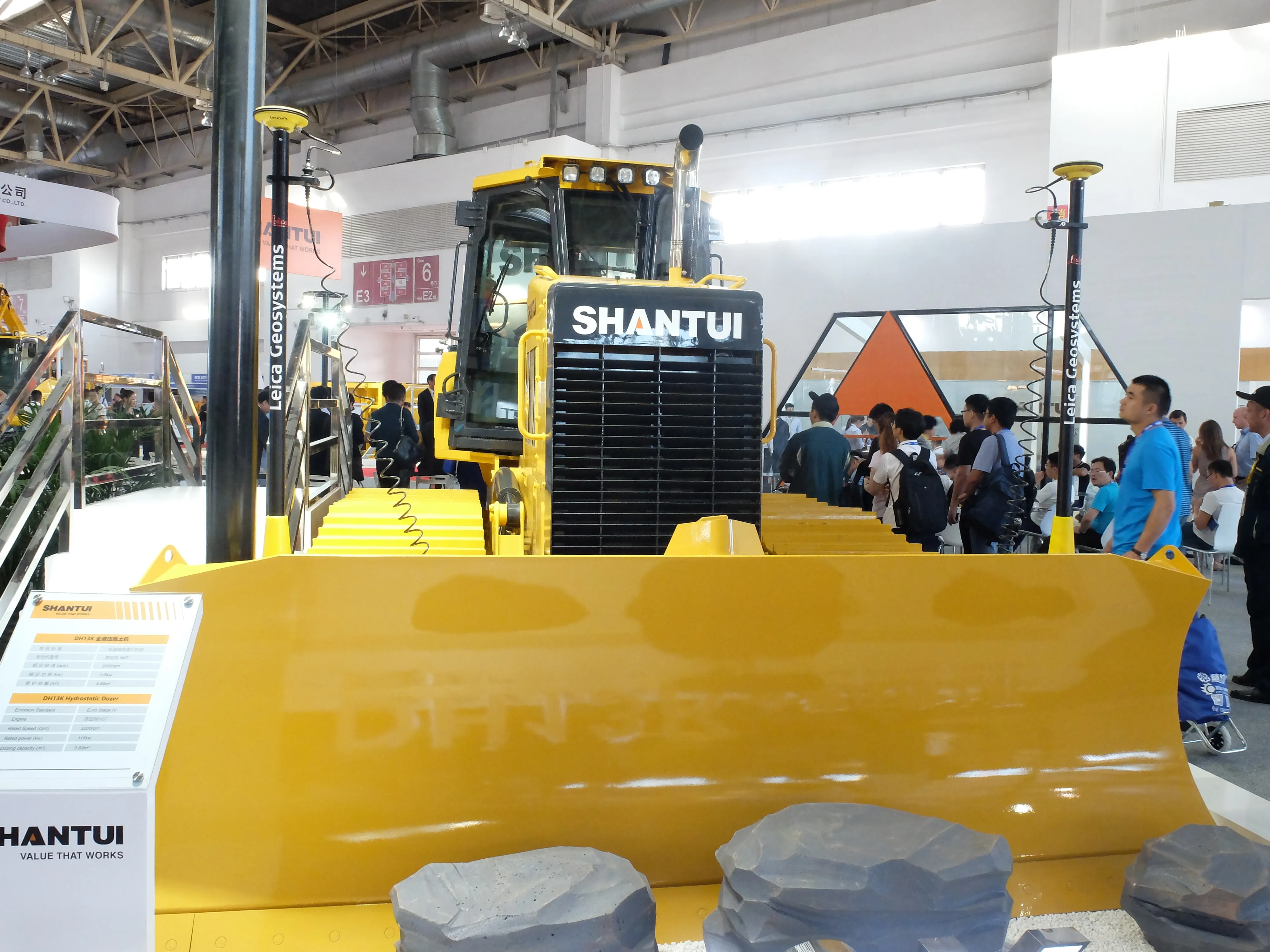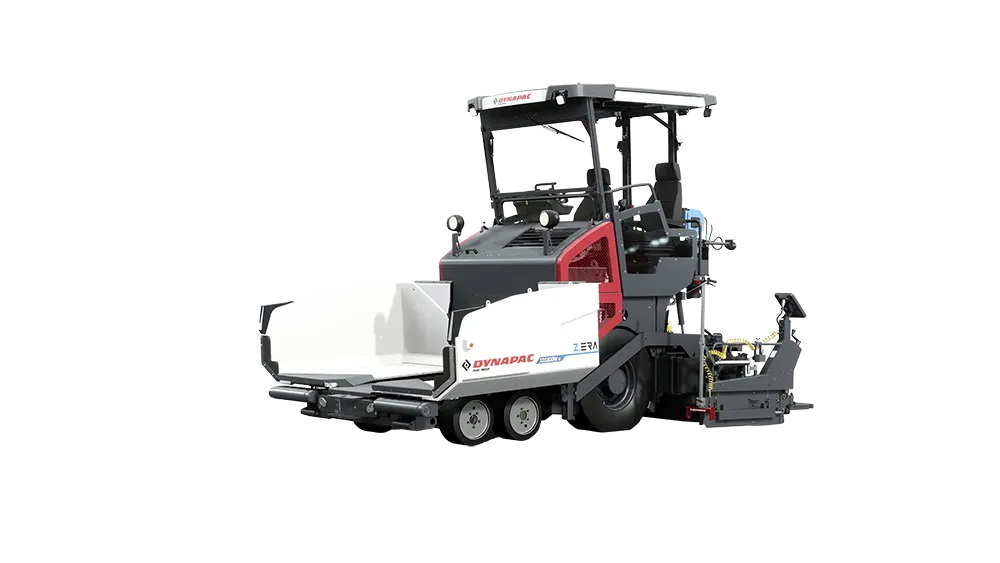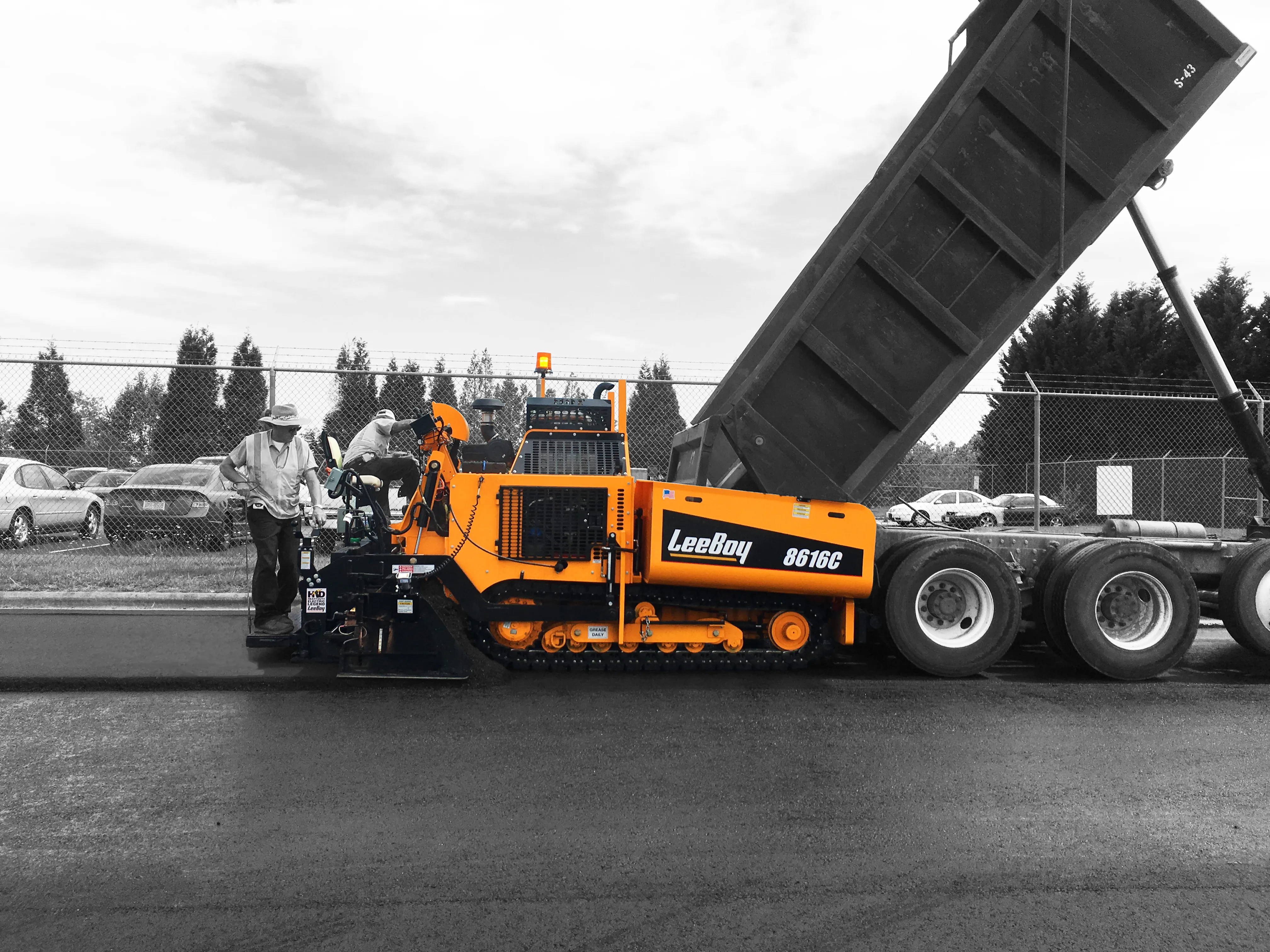Dynapac claims that the new SD Series tracked pavers are easier to operate and more productive due to their high visibility.
April 4, 2012
Read time: 2 mins

RSS206 Dynapac claims that the new SD Series tracked pavers are easier to operate and more productive due to their high visibility. The two SD Series medium class pavers, the SD115C and SD135C, offer production rates of up to 750tonnes/hour, as well as increased fuel efficiency. Paving widths are from 2.5m and 3m respectively. Using hydraulic extensions offers paving widths of 6m and using mechanical extensions, maximum paving widths of 8m and 10m respectively can be achieved.
As with other modern paving machines the firm has ensured operator visibility is maximised and the seat can be turned through 45º to give a view of the hopper, auger compartment, screed, lane indicator and materials truck. The seat can also be slid and pivoted easily while the waterproof control panel has been redesigned for ease of use.
Power comes from a201 Deutz diesel rated at 140kW in the SD135C and 120kW in the SD115C, while an optional eco-mode helps cut fuel consumption further. A 400litre fuel tank extends operation and other benefits include lower engine and fan noise. The machines are both fitted with 6m3 capacity hoppers and can lay a mat up to 300mm thick. Gas-heated screeds are offered as standard, although electric-heated versions are available as options and the firm has also developed a high compaction electric screed for specialised applications. Internal stabilisation bars for the screed's material guiding plates are said to reduce set-up times, while the VB510TV screed has been redesigned making it more compact. Dynapac features, such as the auger with its compact inner drive unit to minimise material segregation and the patented screed with four guide tubes, have been retained.
As with other modern paving machines the firm has ensured operator visibility is maximised and the seat can be turned through 45º to give a view of the hopper, auger compartment, screed, lane indicator and materials truck. The seat can also be slid and pivoted easily while the waterproof control panel has been redesigned for ease of use.
Power comes from a









